Table of Contents |
Consider the table shown below, which shows the revenue (in thousands of dollars) earned by a particular company after each year for their first 8 years of business.
| Year | 1 | 2 | 3 | 4 | 5 | 6 | 7 | 8 |
|---|---|---|---|---|---|---|---|---|
| Revenue | 61 | 70.5 | 82 | 91 | 112.5 | 107.5 | 118.5 | 134.5 |
Thinking of the input-output relationship, it makes the most sense to label the year as input and the revenue as output. Since each input (1, 2, ..., 8) corresponds to one output, this table of values represents a function where the input is “Year” and the output is “Revenue.” We say that this defines revenue as a function of the year.
Let’s take the table of values from the first section and graph the points:
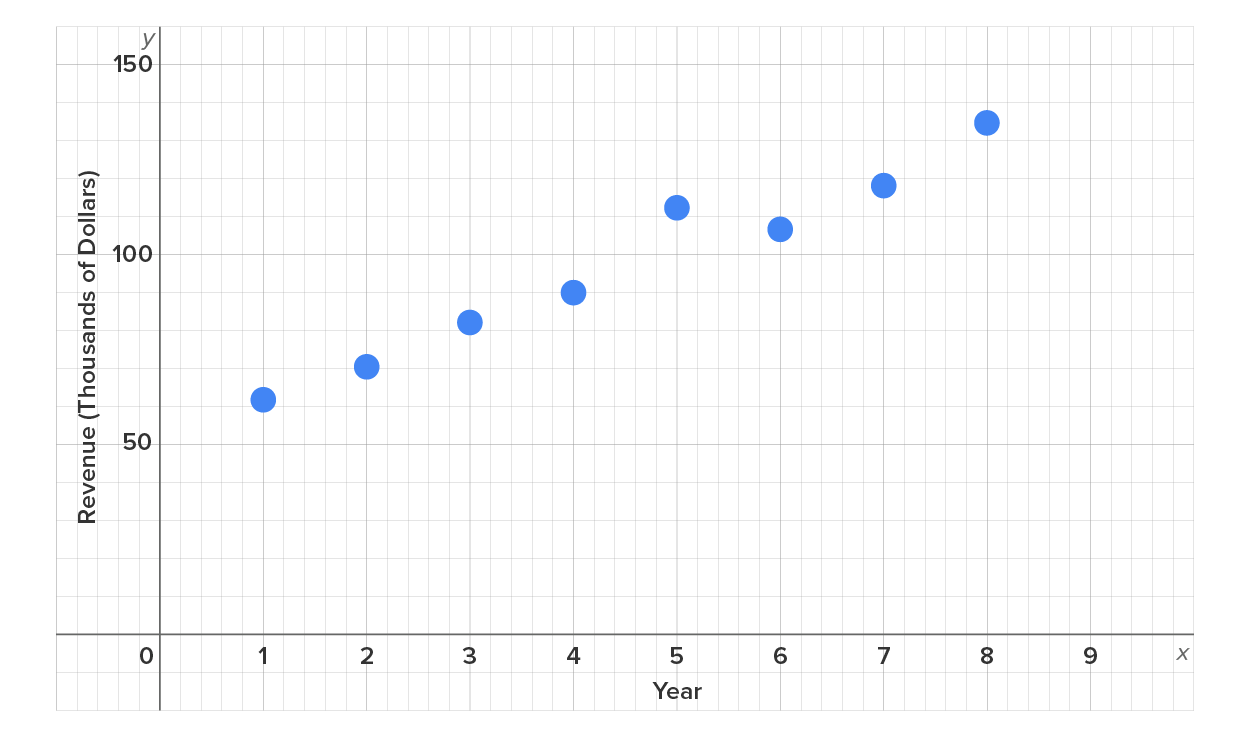
One could say that the graph looks almost linear or roughly linear, but not perfectly linear.
Consider the function  . The following table of values shows some input-output pairs for this function:
. The following table of values shows some input-output pairs for this function:
| x | -2 | -1 | 0 | 1 | 2 | 3 | 4 |
|---|---|---|---|---|---|---|---|

|
-1 | 1 | 3 | 5 | 7 | 9 | 11 |
Now we plot the ordered pairs to form the graph (remember, we connect the dots since there are many other points on the graph; we just chose easy ones).
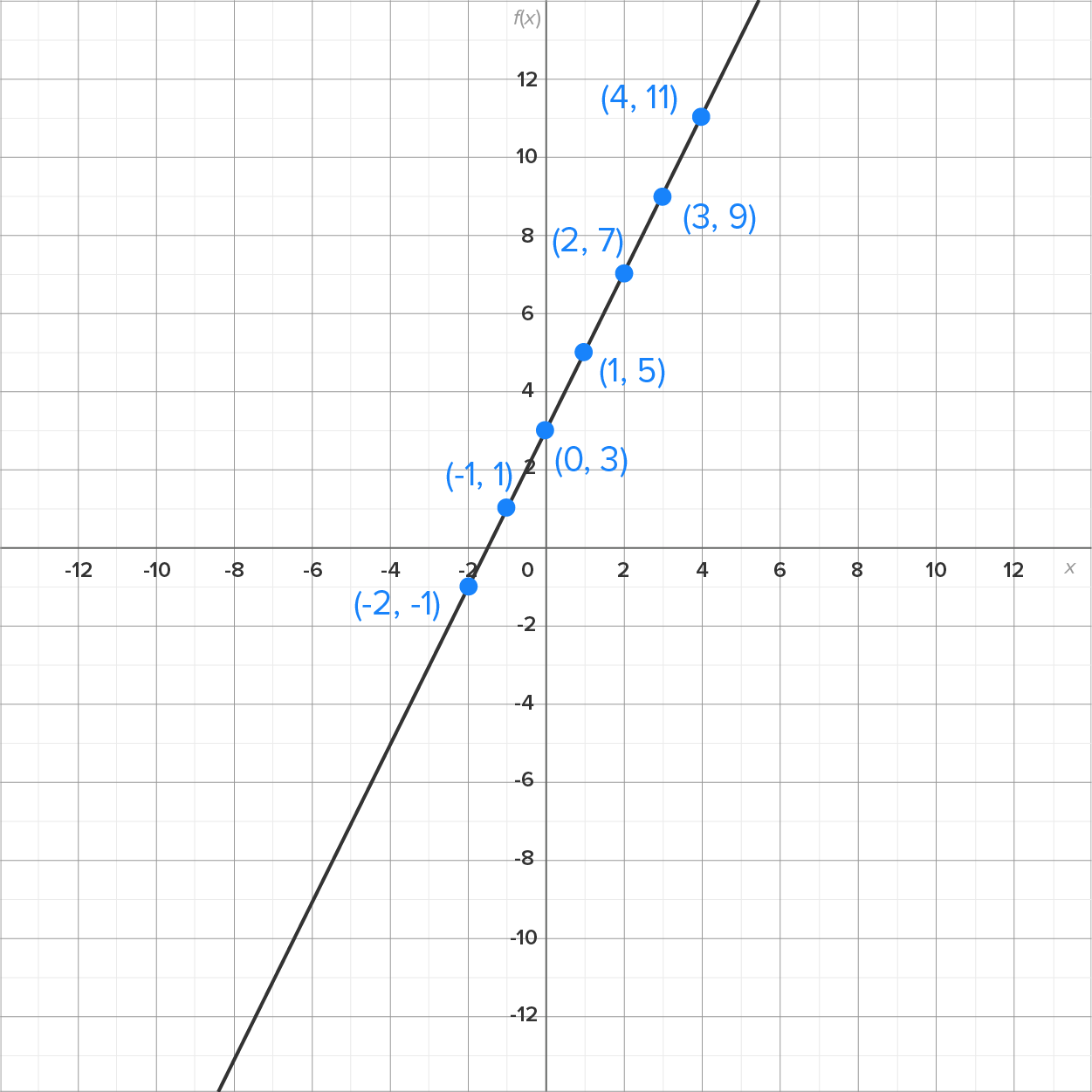
 . In a previous lesson, you learned that
. In a previous lesson, you learned that  is simply a replacement for y.
is simply a replacement for y.
 ” is identical to graphing an equation of the form “
” is identical to graphing an equation of the form “ ”.
”.

Something to think about: what would a graph look like if it wasn’t a function?
Remember that if there is an input that corresponds to two or more outputs, then the relationship is not a function.
The equations  and
and  are both functions, as shown in the last two examples.
are both functions, as shown in the last two examples.
Now consider this table of values, and the graph of the ordered pairs to its right:
|
|
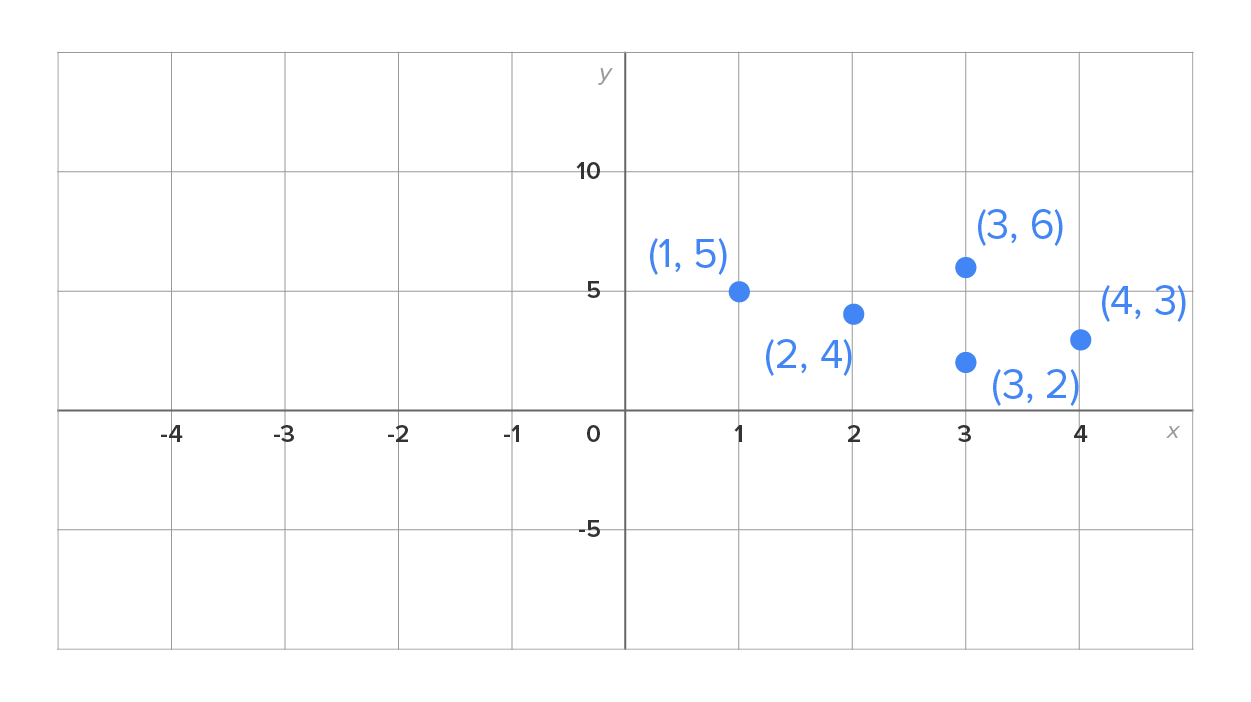
|
From the table of values, we can see that this is not a function, since  corresponds to two different outputs,
corresponds to two different outputs,  and
and 
On the graph, let’s pay attention to the points  and
and  Notice that these points could be connected by a vertical line. This only happens when there are two points with the same x-coordinate. Thus, we have a simple test to determine whether or not a graph defines y as a function of x.
Notice that these points could be connected by a vertical line. This only happens when there are two points with the same x-coordinate. Thus, we have a simple test to determine whether or not a graph defines y as a function of x.
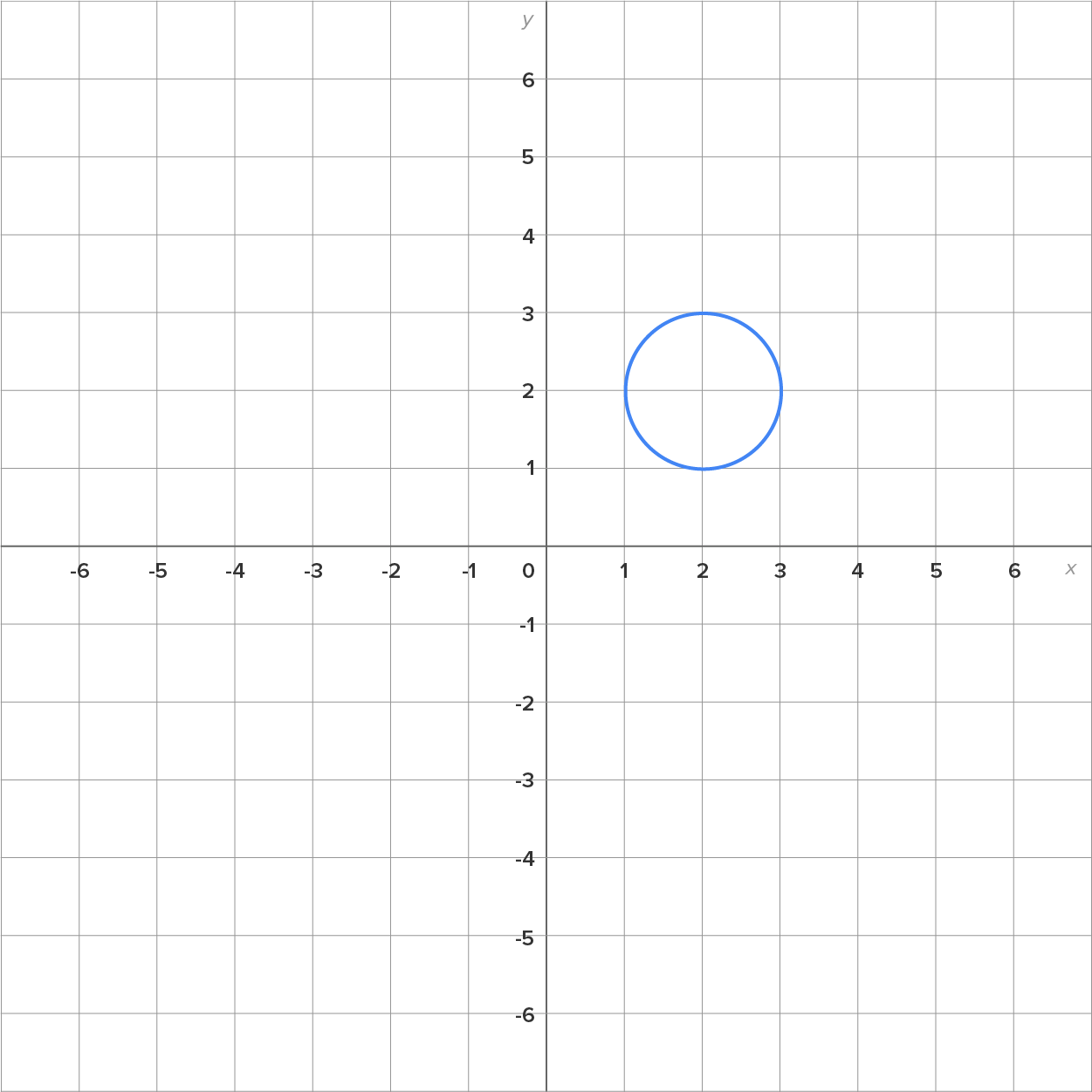

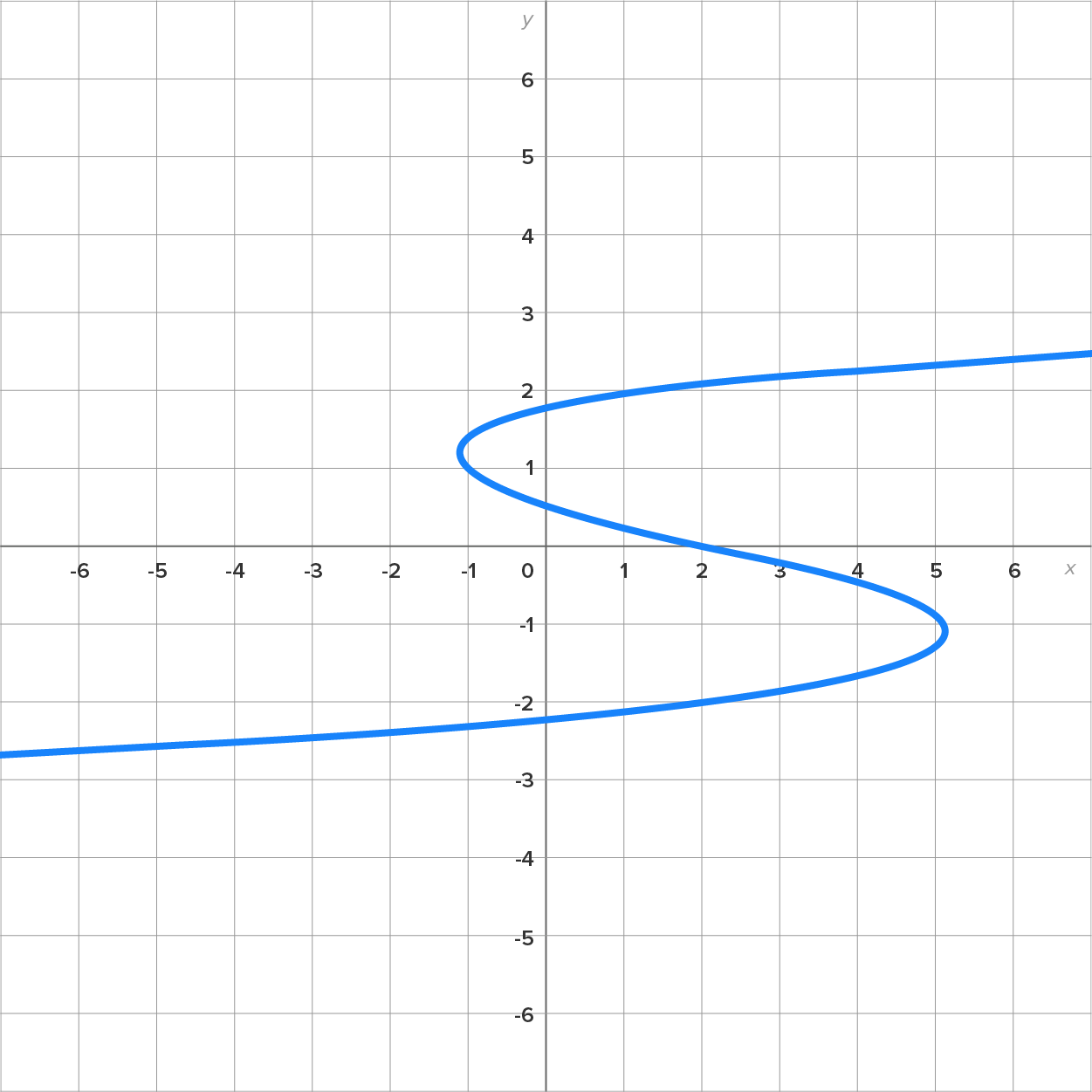
SOURCE: THIS TUTORIAL HAS BEEN ADAPTED FROM CHAPTER 0 OF "CONTEMPORARY CALCULUS" BY DALE HOFFMAN. ACCESS FOR FREE AT WWW.CONTEMPORARYCALCULUS.COM. LICENSE: CREATIVE COMMONS ATTRIBUTION 3.0 UNITED STATES.